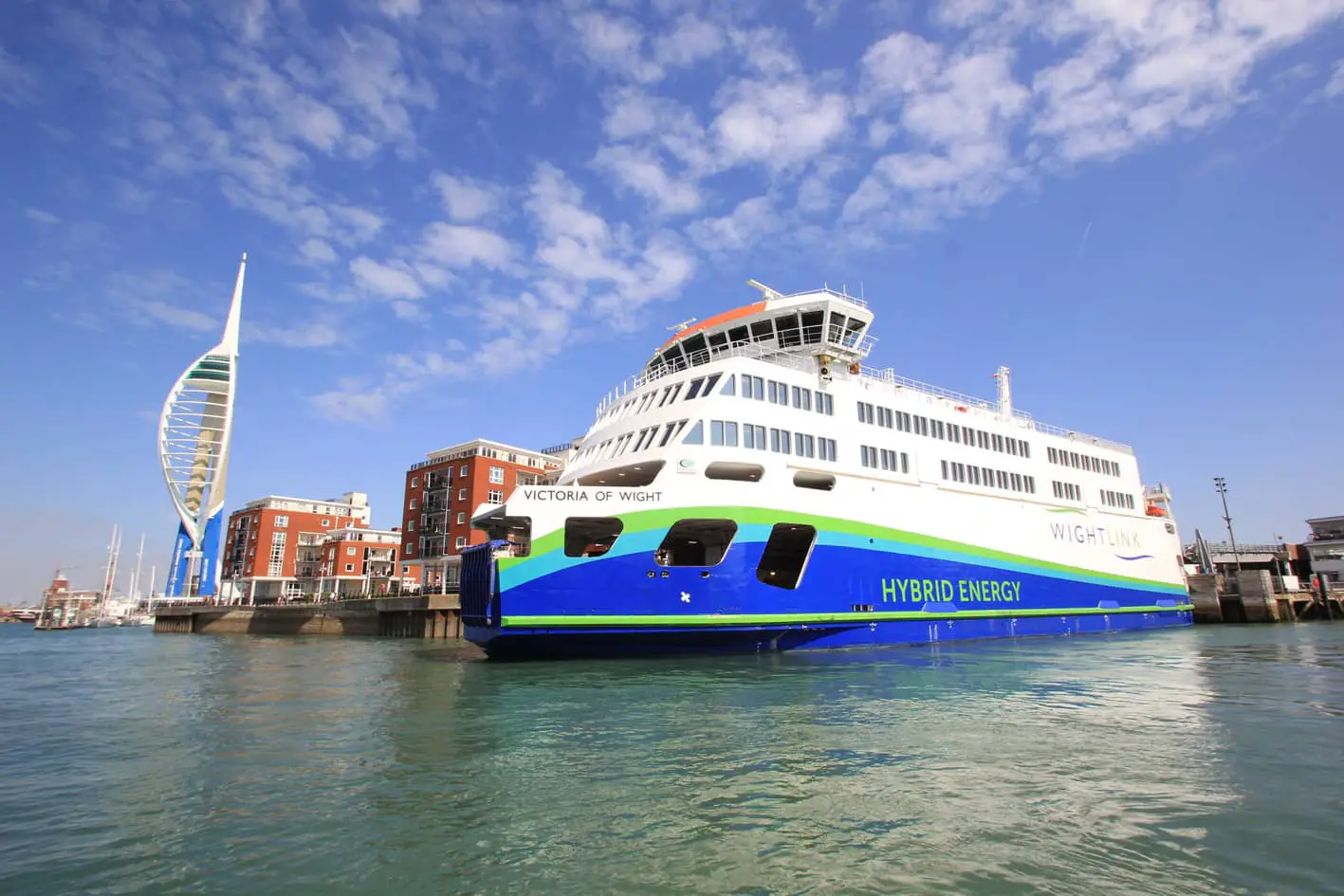Today (Thursday 26th August 2021), it is exactly three years since Wightlink’s £30million flagship entered service, carrying her first passengers between Portsmouth and Fishbourne on the Isle of Wight.
Powered by hybrid energy, Victoria of Wight uses a combination of batteries and conventional engines. She uses 17 per cent less low sulphur marine gas oil than the company’s next largest ship, St Clare, and operates with fewer emissions and more quietly than the rest of the fleet.
Produces least CO2 emissions
The latest statistics from the European Maritime Safety Agency show Victoria of Wight produces the least CO2 emissions by passenger/metric tonnes per nautical mile compared to other ships of similar size in Europe. Her sister St Clare ranks third-best by this measure.
Victoria of Wight is also attracting attention from national policymakers.
“A pioneering example of sustainable transport”
The UK Government’s Transport Decarbonisation Plan has showcased Wightlink’s new flagship as a pioneering example of sustainable transport, as UK shipping aims to achieve net zero emissions by 2050.
The strategy document outlines how the sector can eliminate its dependence on fossil fuels through innovative developments in technology. It describes Victoria of Wight as a highly efficient hybrid car ferry which uses a 408kWh battery array alongside four high efficiency marine diesel engines.
Greenfield: A landmark day for the company
Wightlink Chief Executive Keith Greenfield remembers,
“Sunday 26th August 2018 was a landmark day for the company and I was delighted to welcome our first customers on board the first sailing to Fishbourne.
“Victoria of Wight was integral to Wightlink’s £45million investment in the Portsmouth/ Fishbourne route. As we had already invested £15million on improved facilities at both ports to permit double deck loading of our two largest ferries, her first commercial sailing was an important milestone.”
Wightlink continues to explore new ways to employ technological advances to become more sustainable. Current options include installing energy efficiency measures on the rest of the fleet, solar power generation at ports, converting all suitable lighting to LED and adding more charging points for electric vehicles. The company is also examining its options for the next generation of vessels, with the ultimate aim of building an all-electric ferry.
News shared by Karen on behalf of Wightlink. Ed





